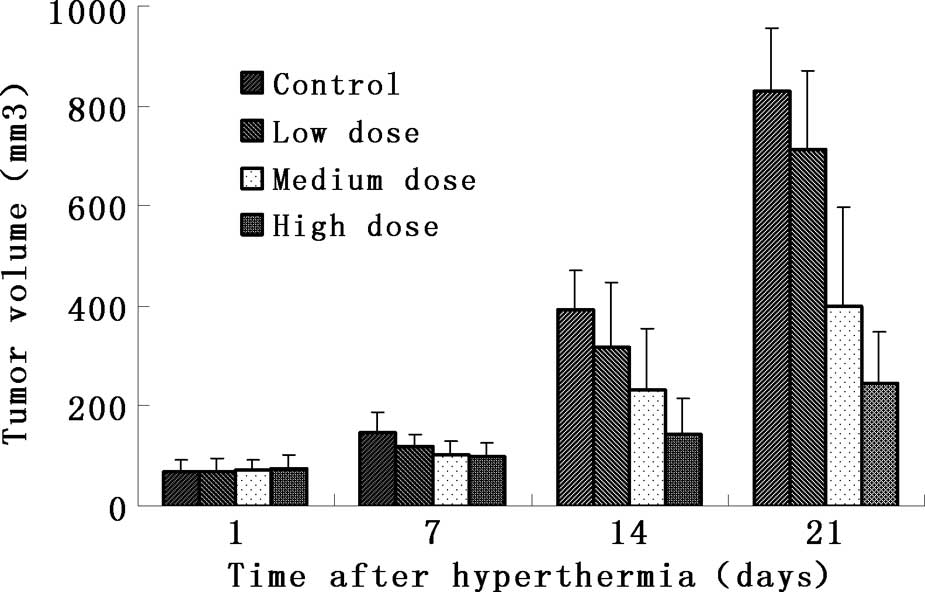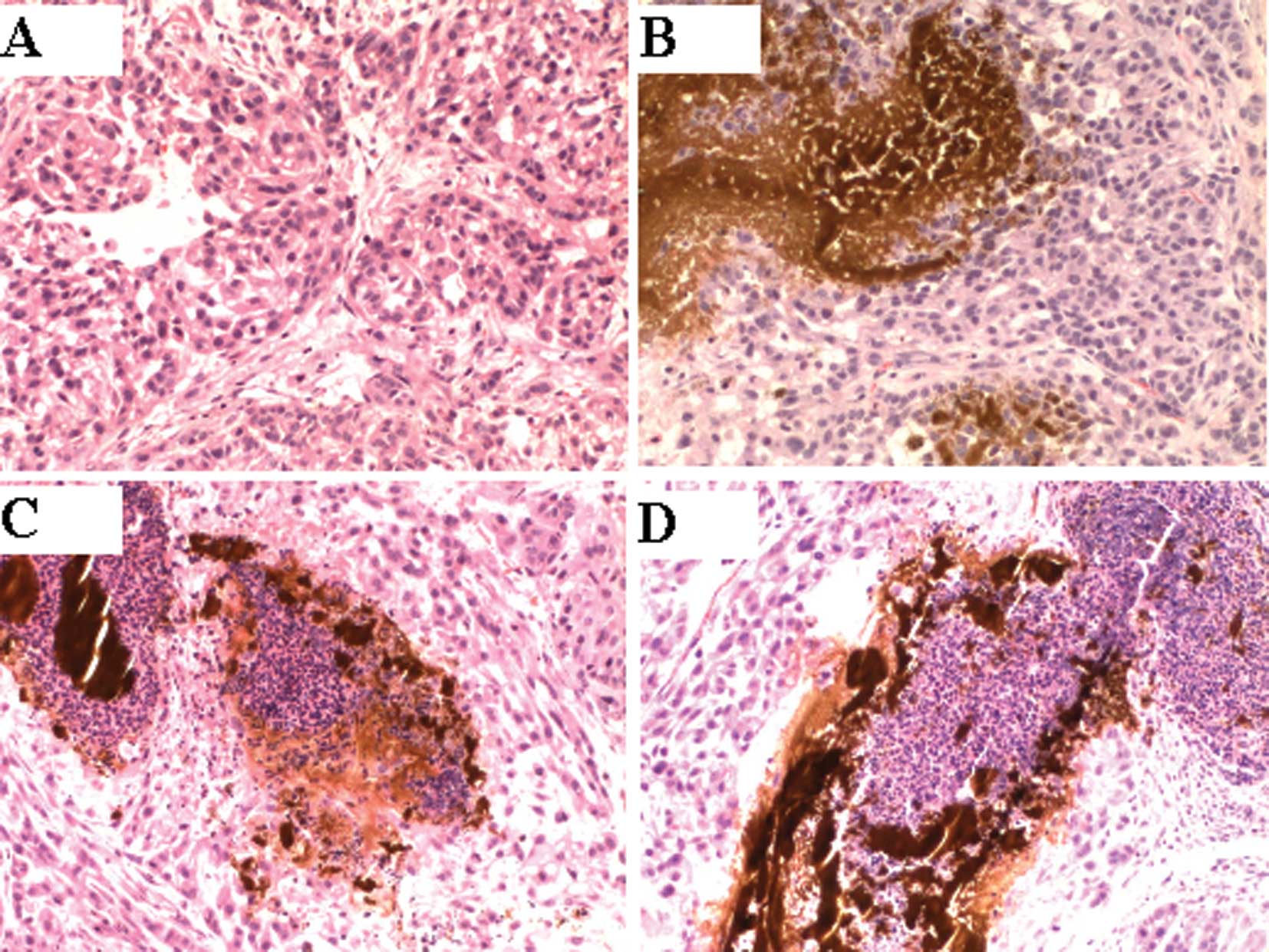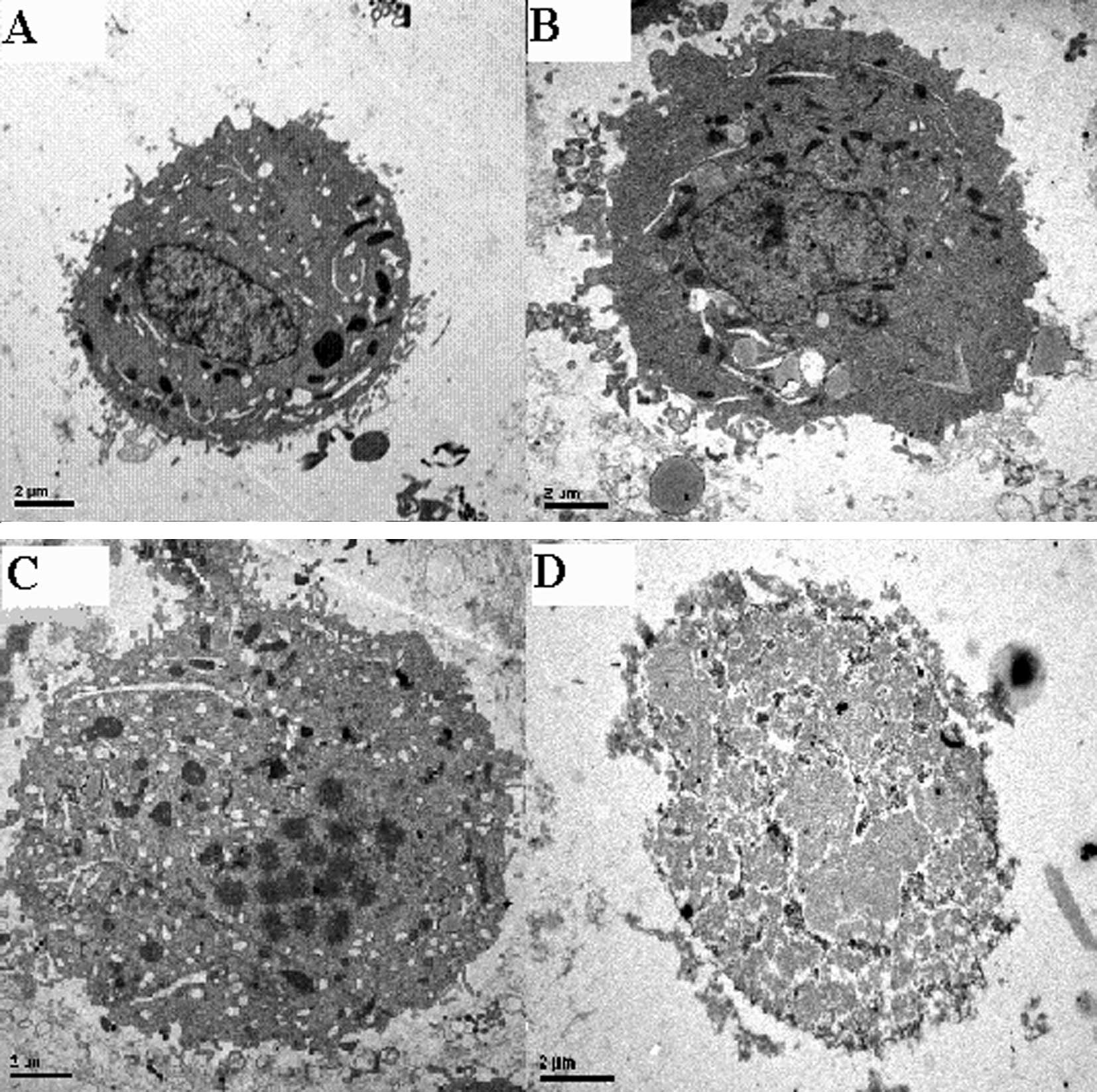Effect of magnetic fluid hyperthermia on lung cancer nodules in a murine model
- Authors:
- Runlei Hu
- Shenglin Ma
- Hu Li
- Xianfu Ke
- Guoqing Wang
- Dongshan Wei
- Wei Wang
-
View Affiliations
Affiliations: Department of Thoracic Surgery, Hangzhou First People's Hospital, Hangzhou, Zhejiang 310006, P.R. China, Department of Thoracic Surgery, Hangzhou First People's Hospital, Hangzhou, Zhejiang 310006, P.R. China, Laboratory Animal Center, Zhejiang Academy of Medical Sciences, Hangzhou, Zhejiang 310006, P.R. China
- Published online on: August 9, 2011 https://doi.org/10.3892/ol.2011.379
-
Pages:
1161-1164
Metrics:
Total
Views: 0 (Spandidos Publications: | PMC Statistics:
)
Metrics:
Total PDF Downloads: 0 (Spandidos Publications: | PMC Statistics:
)
This article is mentioned in:
Abstract
The purpose of the present study was to investigate the therapeutic effect of magnetic fluid hyperthermia (MFH) induced by an alternating magnetic field (AMF) on human carcinoma A549 xenograft in nude mice. An animal model of human lung cancer was established by subcutaneous injection of human lung cancer A549 cells in BALB/c nude mice. The xenograft mice were randomly divided into four groups and each group was treated with an injection of a different concentration of magnetic fluid: control, low-dose (67.5 mg/ml), medium-dose (90.0 mg/ml) and high-dose group (112.5 mg/ml), respectively. Following the injection (24 h), the tumor was heated in an AMF for 30 min. Tumor volumes were then measured every week. The therapeutic effect was assessed by measuring the tumor volume and weight. Pathological examination was performed with a light and electronic microscope following treatment. The temperature at the surface of the tumor in the low-, medium- and high-dose groups increased to 41.3, 44.5 and 46.8˚C, respectively. The tumor grew significantly slower in the medium- and high-dose groups (both p<0.05) compared to the control group. Cytoclasis and apoptosis were detected under light and electron microscopy. In conclusion, MFH induced by AMF inhibited tumor growth and promoted apoptosis of human carcinoma A549 cells in a xenograft mice model.
View References
|
1
|
Hammerschmidt S and Wirtz H: Lung cancer:
current diagnosis and treatment. Dtsch Arztebl Int. 106:809–818.
2009.PubMed/NCBI
|
|
2
|
Jordan A, Wust P, Scholz R, et al: Effects
of magnetic fluid hyperthermia (MFH) on C3H mannary carcinoma in
vivo. Int J Hyperthermia. 13:587–605. 1997. View Article : Google Scholar : PubMed/NCBI
|
|
3
|
Hildebrandt B, Wust P, Ahlers O, et al:
The cellular and molecular basis of hyperthermia. Crit Rev Oncol
Hematol. 43:33–56. 2002. View Article : Google Scholar : PubMed/NCBI
|
|
4
|
Ito A, Matsuoka F, Honda H and Kobayashi
T: Antitumor effects of combined therapy of recombinant heat shock
protein 70 and hyperthermia using magnetic nanoparticles in an
experimental subcutaneousmurine melanoma. Cancer Immunol
Immunother. 53:26–32. 2004. View Article : Google Scholar : PubMed/NCBI
|
|
5
|
Yanase M, Shinkai M, Honda H, Wakabayashi
T, Yoshida J and Kobayashi T: Antitumor immunity induction by
intracellular hyperthermia using magnetite cationic liposomes. Jpn
J Cancer Res. 89:775–782. 1998. View Article : Google Scholar : PubMed/NCBI
|
|
6
|
Wang ZY, Song J and Zhang DS: Nanosized
As2O3/Fe2O3 complexes combined with magnetic fluid hyperthermia
selectively target liver cancer cells. World J Gastroenterol.
15:2995–3002. 2009. View Article : Google Scholar : PubMed/NCBI
|
|
7
|
Kikumori T, Kobayashi T, Sawaki M, et al:
Anti-cancer effect of hyperthermia on breast cancer by magnetite
nanoparticle-loaded anti-HER2 immunoliposomes. Breast Cancer Res
Treat. 113:435–441. 2009. View Article : Google Scholar : PubMed/NCBI
|
|
8
|
Jiang Z, Yan W, Ming J and Yu Y: Docetaxel
weekly regimen in conjunction with RF hyperthermia for pretreated
locally advanced non-small cell lung cancer: a preliminary study.
BMC Cancer. 7:1892007. View Article : Google Scholar : PubMed/NCBI
|
|
9
|
Chen GZ, Luo BD, Wang HQ, et al: Effect of
hyperthermia on rat hipocampal pyramidal cell apoptosis in vitro.
Di Yi Jun Yi Da Xue Xue Bao. 23:233–235. 2003.PubMed/NCBI
|
|
10
|
Mathiasen I, Sergeev I, Bastholm L, Elling
F, Norman A and Jäättelä M: Calcium and calpain as key mediators of
apoptosis-like death induced by vitamin D compounds in breast
cancer cells. J Biol Chem. 277:30738–30745. 2002. View Article : Google Scholar : PubMed/NCBI
|
|
11
|
Barni S, Pontiggia P, Bertone V, Vaccarone
R, Silvotti MG, Pontiggia E and Mathe G: Hyperthermia-induced cell
death by apoptosis in myeloma cells. Biomed Pharmacother.
55:170–173. 2001. View Article : Google Scholar : PubMed/NCBI
|













